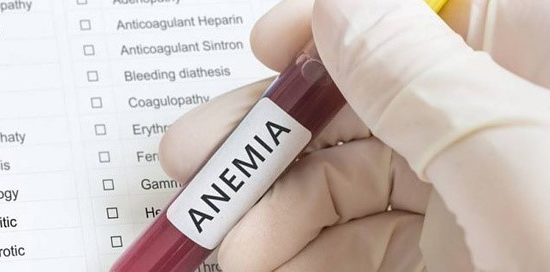Credit: Original article published here.Management of patients with anemia of chronic kidney disease (CKD) seeks to reduce red blood cell transfusions and avoid complications such as allosensitization. Researchers, led by Vivekanand Jha, MBBS, MD, DM, PhD, conducted an analysis of data on red blood cell transfusion needs in patients with CKD on and not on dialysis in the ASCEND-D and ASCEND-ND trials. Trial participants were treated with daprodustat, a novel hypoxia inducible factor prolyl hydroxylase inhibitor, or with erythropoiesis-stimulating agents (ESAs). Results were reported during a poster session at the National Kidney Foundation Spring Clinical Meetings 2023. The poster was titled The Effects of Daprodustat on Blood Transfusion Rates in the ASCEND-D and -ND Trials. The analysis included data on rates of red blood cell transfusions (events per 100 patient-years) in the ASCEND-D and ASCEND-ND trials and in the ASCEND-D ESA hyporesponder (ESA-HR) subgroup (baseline ESA-resistance index >2.0/>450 U/kg epoetin per week). In prespecified analyses, adjustments in Cox proportional model-estimated hazard ratios (HR) included treatment/region, dialysis type in ASCEND-D participants, and randomization-ESA use in ASCEND-ND trial participants. In both trials, red blood cell transfusions (≥5%) and overall red blood cell transfusion rates were numerically lower in patients in the daprodustat
Credit: Original article published here.According to Jake Hunnicutt, PhD, and colleagues, there are few data on the use of red blood cell transfusion among patients with anemia and nondialysis dependent chronic kidney disease (CKD) in the United States. Data on how the rates of red blood cell transfusion vary by hemoglobin level are also limited. During a poster session at the National Kidney Foundation Spring Clinical Meetings 2023, the researchers presented data on the rate of red blood cell transfusions and associated complications from 2017 to 2019. The poster was titled Red Blood Cell (RBC) Transfusion Use Varies by Baseline Hemoglobin (Hb) and Is Associated With Posttransfusion Hyperkalemia and Hospitalization Within 30 Days in US Patients With Stage 3-5 CKD and Anemia. The retrospective cohort study utilized Optum’s deidentified Integrated Claims-Clinical dataset. Inclusion criteria were hemoglobin measure (index date), prior evidence of stage 3-5 CKD, and anemia (defined as treatment for anemia or baseline hemoglobin <12 g/dL for women or <13 g/dL for men). Analyses were stratified by insurance type (commercial or Medicare Advantage [MA]). Associations between baseline hemoglobin and red blood cell transfusion events within 6 months were quantified using estimated adjusted rate ratios (aRR) and 95% CIs. Claims
Credit: Original article published here.The most common renal replacement therapies for patients with end-stage renal disease (ESRD) are peritoneal dialysis and hemodialysis. More than 500,000 individuals in China are receiving dialysis treatment, and more than 90% of patients on dialysis experience renal anemia. Anemia has been associated with increased risk for cardiovascular complications, diminished quality of life, and mortality. Insufficient erythropoietin (EPO), iron deficiency, and inflammation are among the main causes of renal anemia. In the past 30 years, erythropoiesis-stimulating agents (ESAs) have been used to treat EPO deficiency. However, for patients with poor initial responses to ESAs, increasing the dose to achieve target hemoglobin levels has been associated with an increase in the risk of cardiovascualr events and death. Approximately 10% of patients treated with ESAs have EPO hyporesponsiveness, defined as a sustained substandard hemoglobin (<10.0 g/dL), despite sufficient iron levels (ferritin >100 ng/dL), and exogenous EPO administration (≥6000 IU/week). Management of patients with EPO hyporesponsiveness is challenging. When activated, hypoxia-inducible factors (HIFs) induce the production of EPO. Roxadustat is a prolyl hydroxylase inhibitor that can simulate hypoxic stimulation to stabilize HIF expression under normoxic conditions. Junjie Chen, MD, and colleagues conducted a single center, before and after treatment,




